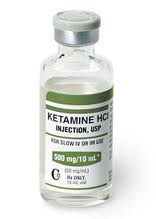Long Delays to First Treatment Are Crippling Many with Bipolar Disorder: What You Can Do
An article published by N. Drancourt et al. in the journal Acta Psychiatra Scandinavica this year examined the duration of the period between a first mood episode and treatment with a mood stabilizer among 501 patients with bipolar disorder. The time between a first episode of depression, mania, or hypomania and first treatment averaged 9.7 years. The authors conclude that more screening, better recognition of the early stages of the illness, and greater awareness are needed to decrease this long delay.
Editor’s Note: The article by Dancourt et al. replicates earlier findings of an average treatment delay of 10 years among bipolar patients from the treatment network in which this editor (Robert Post) is an investigator (formerly the Stanley Foundation Bipolar Network, now called the Bipolar Collaborative Network). The duration of the untreated interval (DUP) for patients with bipolar disorder is unacceptably long and carries a heavy price.
Those with the earliest age of onset experience the longest delay to first treatment. Early onset is associated with poor outcome compared to adult onset bipolar disorder, and the duration of time untreated adds a separate, independent risk of a worse outcome in adulthood, especially more frequent and severe depression, more episodes, and less time well.
What patients and doctors can do to shorten this interval to first treatment: Know the risk factors for early onset bipolar disorder so you can seek evaluation and advise treatment as appropriate. Read more
The Impact of Obesity on Brain and Behavior
In an abstract presented at the 5th Biennial Conference of the International Society for Bipolar Disorders, K. Sim and colleagues discussed the impact of increased body mass index on the integrity of white matter in the brain during a first episode of mania. The researchers found significant abnormalities in white matter integrity in the temporal pole and occipital brain regions in overweight and obese patients compared to patients of normal weight. These data highlight the need to clarify the neural mechanisms that link obesity and poorer functional outcomes in bipolar disorder.
Other investigators have reported that bipolar patients with obesity have a less robust response to naturalistic treatment compared to those of normal weight. At least one study suggested that patients with overweight and obesity experience more cognitive difficulties.
Editor’s Note: The pathophysiological mechanisms involved in the relationship between weight and brain function are not yet clear, although one possibility is that in obese patients, some fat cells in the abdominal area become too big to survive and are scavenged by other cytokine-producing cells. These inflammatory cytokines are then able to cross the blood-brain barrier, enter the brain, and affect neuronal functioning. Whether a mechanism like this is at play in relation to these particular findings remains for further investigation.
Nonetheless, these data suggest the importance of good diet, exercise, and other means of maintaining a good body weight in order to attempt to avoid some of the adverse associations of obesity with deficits in cognition, white matter integrity, and treatment outcome.
Patients with Bipolar Depression Have a Higher Mortality Rate, Especially if They Also Have Cardiovascular Disease
In a large longitudinal study of depressed patients in Taiwan that was published in the Journal of Psychiatric Research this year, Chang et al. found that after 10 years, patients with bipolar depression (N=1,542) had significantly higher mortality rate than those with other types of depression (N=17,480). Patients with bipolar depression were twice as likely to have died from suicide or accidental death than were patients who had other types of depression. When cardiovascular disease was also present in both groups, patients with bipolar disorder were also four times more likely to have died from suicide or accidental death than those with other types of depression.
Editor’s Note: These data again emphasize the critical importance of patients with bipolar disorder carefully looking after their medical and cardiovascular health both early on and throughout the entire course of their illness.
Much of the excess medical mortality in bipolar disorder is attributed to cardiovascular disease, and now those with cardiovascular disease also appear more prone to suicide. This should be a call to action to improve the long-term treatment of both bipolar disorder and its common comorbidity, cardiovascular disease.
Get your medical illness treated!
It will improve your health and longevity. Especially treat these signs of the metabolic syndrome, a major risk factor for cardiovascular disease:
- Cholesterol–Increase “good” cholesterol (high-density lipoproteins or HDLs) and lower “bad” cholesterol (low-density lipoproteins or LDLs)
- High Triglycerides–Triglycerides should be below 150 mg/dL
- Blood Pressure–Aim for 130/85 mmHg or lower
- Blood Sugar–Fasting blood sugar (glucose) should stay below 100 mg/dL
- Overweight & Obesity–Keep waist circumference under 40” for men or 35” for women
Exercise is good for all of these!
How Illness Progresses In The Recurrent Affective Disorders
This editor (RM Post) in collaboration with Jacqueline Fleming and Flavio Kapczinski published the article “Neurobiological mechanisms of illness progression in the recurrent affective disorders” in the Journal of Psychiatric Research this year. The article built on several themes about the progression of bipolar illness that had been explored in previous research.
These themes include:
- The likely acceleration of repeated episodes as a function of the number of prior episodes (episode sensitization)
- The increased responsivity of the illness to repeated stressors (stress sensitization)
- The increased behavioral reactivity to repeated use of psychomotor stimulants such as cocaine (stimulant-induced behavioral sensitization)
Not only are these observations well documented in the scientific literature, but recent observations also suggest that each type of sensitization can show cross-sensitization to the other two types. That is, individuals exposed to repeated stressors are more likely both to experience affective illness episodes and to adopt comorbid substance abuse. In a similar way, episodes of an affective disorder and stressors may also be associated with the relapse into drug administration in those who have been abstinent.
In addition to these mechanisms of illness progression in the recurrent affective disorders, the new article reviews the literature showing that the number of affective episodes or the duration of the illness appear to be associated with a variety of other clinical and neurobiological variables.
The number of affective episodes a patient experiences is associated with the degree of cognitive dysfunction present in their bipolar illness, and experiencing more than 4 episodes of unipolar or bipolar depression is a risk factor for dementia in late life. A relative lack of response to most treatments is also correlated with the number of prior episodes, and this holds true for response to naturalistic treatment in general. While most of these data are correlational and the direction of causality cannot be ascertained for certain, it is likely that the number of affective episodes and/or their duration could account for and drive difficulties with treatment and with cognitive function.
If this were the case, one would expect to see a variety of neurobiological correlates with the number of prior episodes or duration of illness, and in the article we summarize those that have been found in unipolar and bipolar disorder. Considerable data indicate that cortical volume and degrees of prefrontal cortical dysfunction can vary as a function of number of prior episodes. There is evidence that increased activity of the amygdala and the nucleus accumbens are also related to episodes or duration of illness. In those with unipolar depression, the volume of the hippocampus is decreased with longer duration of illness. Read more
Developing Rapid Onset Antidepressant Drugs That Act at the NMDA Receptor
 For several years, researchers have been exploring potential rapid-acting treatments for unipolar and bipolar depression. Intravenous ketamine has the best-replicated results so far. A slow infusion of ketamine (0.5mg/kg over 40 minutes) produces a rapid onset of antidepressant effects in only a few hours, but the improved mood lasts only 3-5 days.
For several years, researchers have been exploring potential rapid-acting treatments for unipolar and bipolar depression. Intravenous ketamine has the best-replicated results so far. A slow infusion of ketamine (0.5mg/kg over 40 minutes) produces a rapid onset of antidepressant effects in only a few hours, but the improved mood lasts only 3-5 days.
Ketamine blocks the receptors of the main excitatory neurotransmitter in the central nervous system, glutamate. Glutamate is released from nerve endings and travels across the synapse to receptors on the next cell’s dendrites. There are multiple types of glutamate receptors at the dendrites, and ketamine blocks one called the NMDA receptor, which allows calcium ions to enter the cell.
Some downsides to ketamine are the brief duration of its effectiveness and its dissociative side effects. The search is on for other drugs that are free from these side effects and that could extend the duration of rapid-onset antidepressant effects.
At the 2012 meeting of the International Congress of Neuropsychopharmacology (CINP), Mike Quirk of the pharmaceutical company AstraZeneca reviewed data on the intricacies of the glutamate NMDA receptor blockade and discussed the potential of AZD6765, an NMDA receptor blocker he and his colleagues have been researching.
The more the NMDA receptor is blocked, the more psychomimetic it becomes, meaning it produces hallucinations and delusions. For example, phencyclidine (PCP or angel dust) is a potent NMDA receptor blocker and psychosis inducer. For antidepressant purposes, a less complete or less persistent NMDA receptor blockade is desired. Read more





